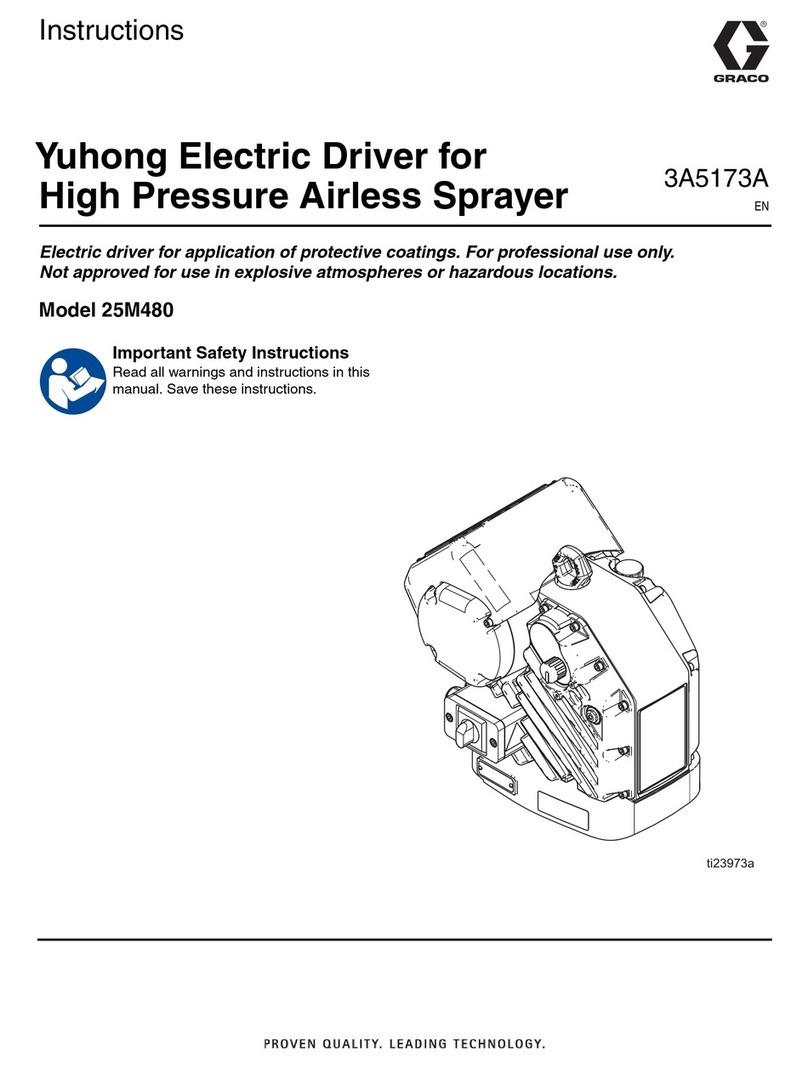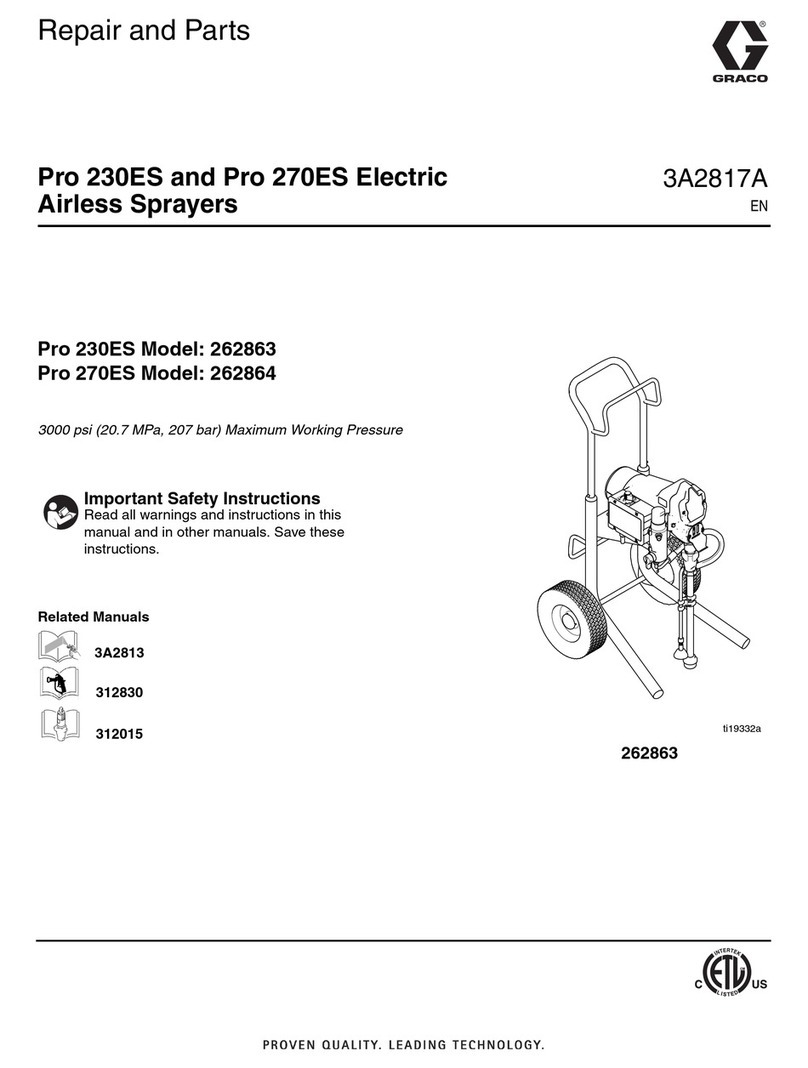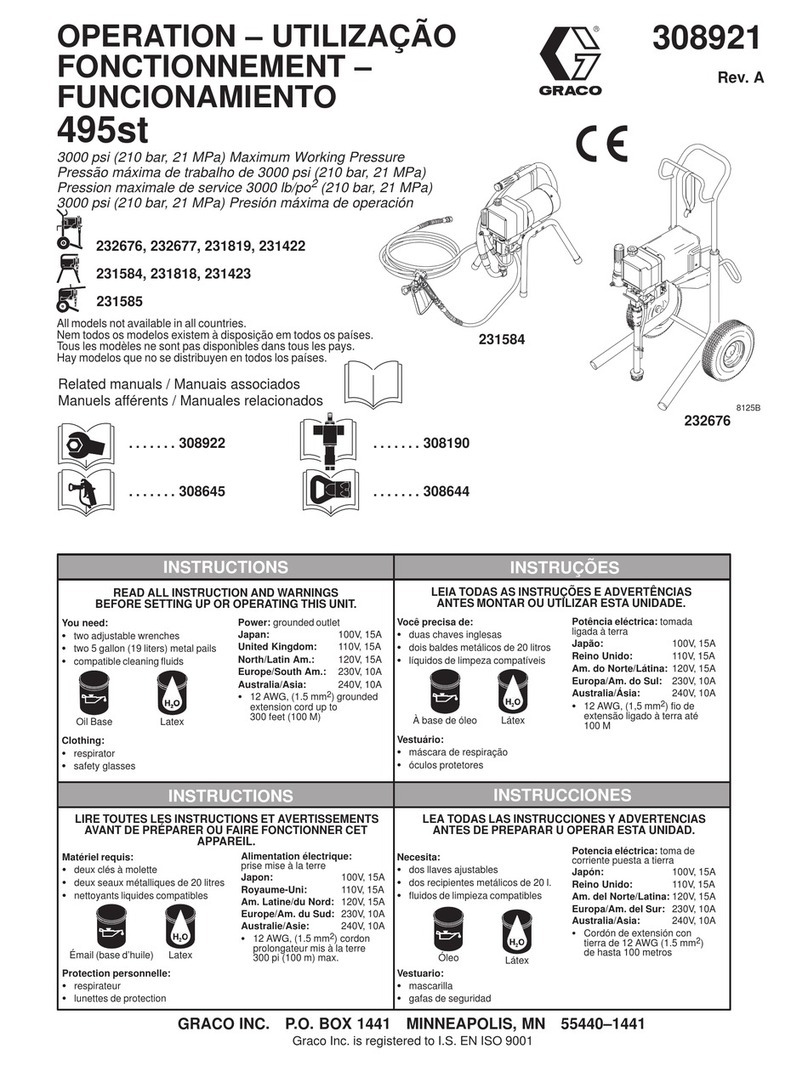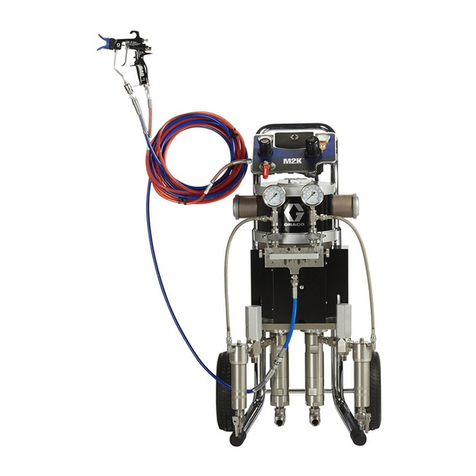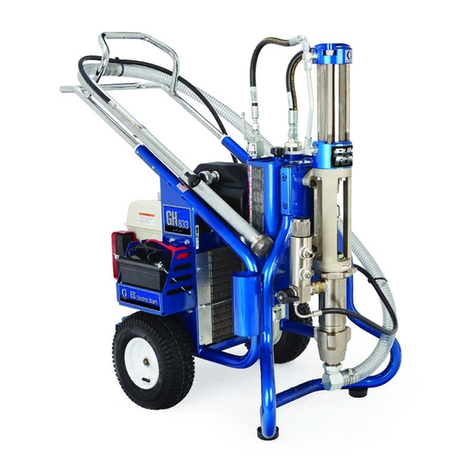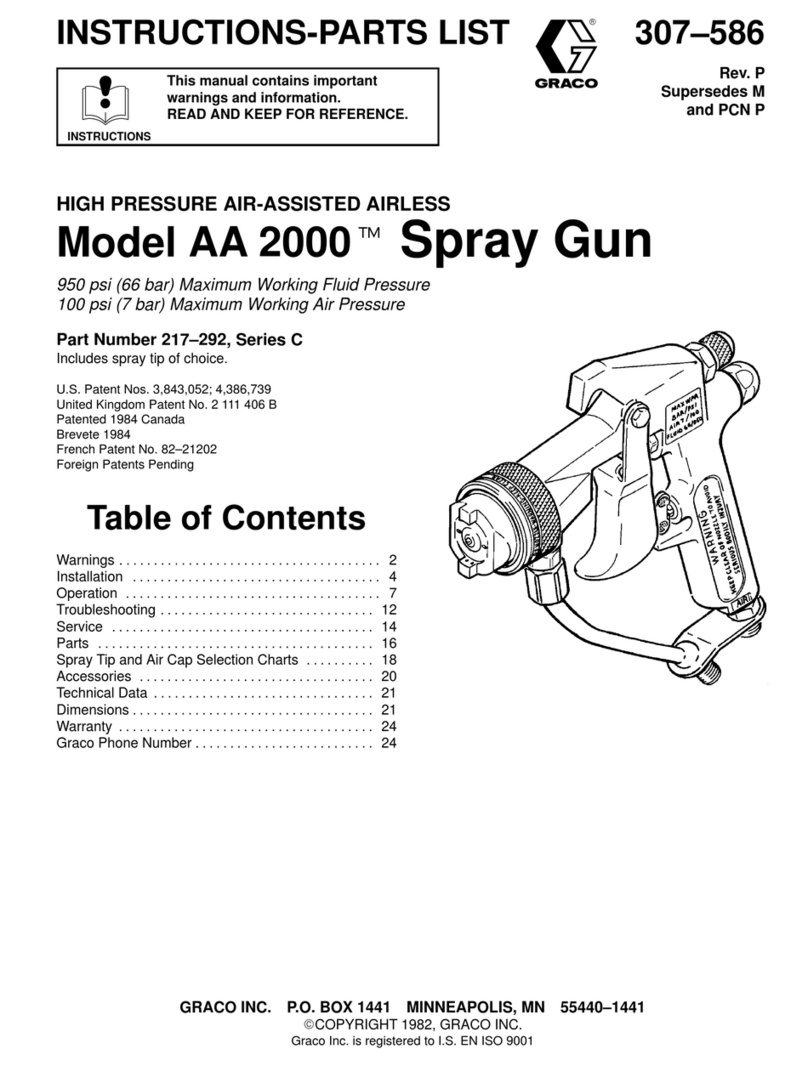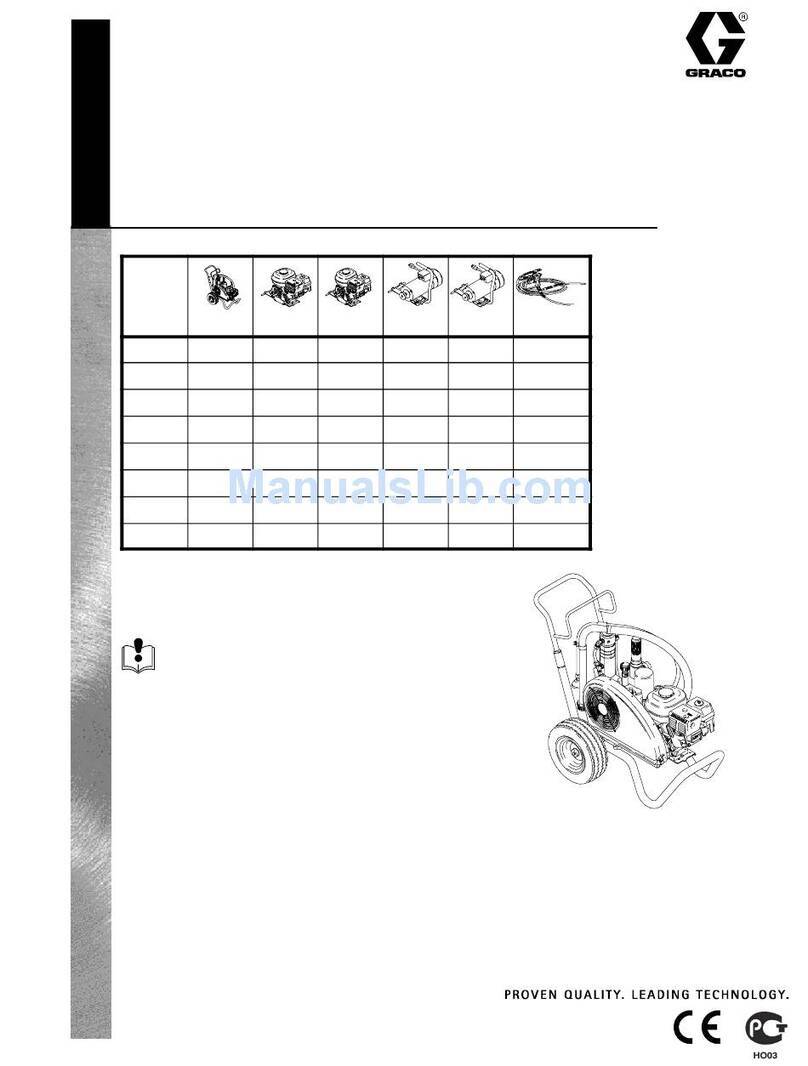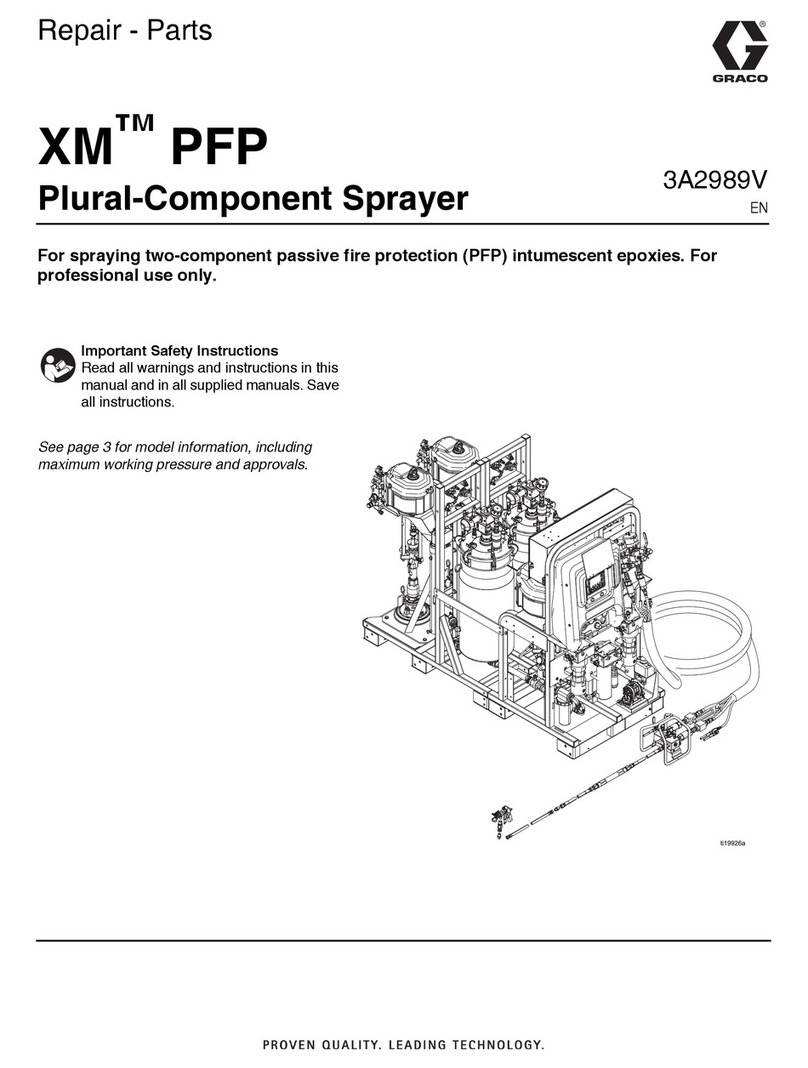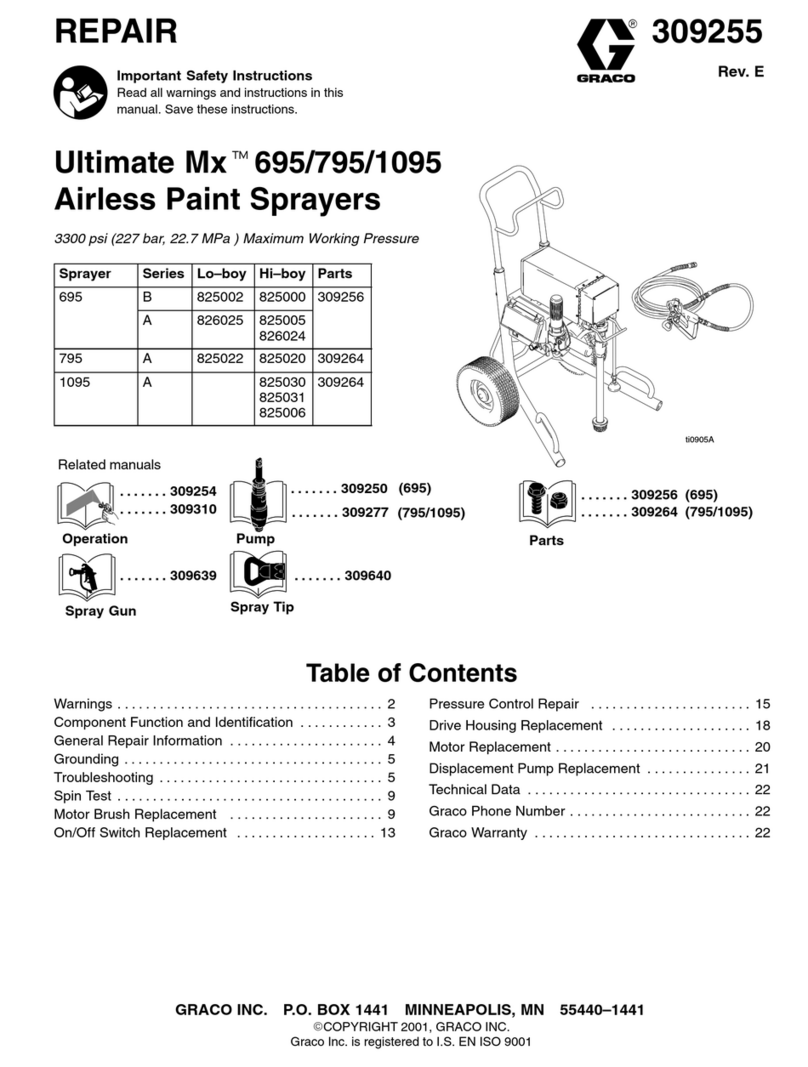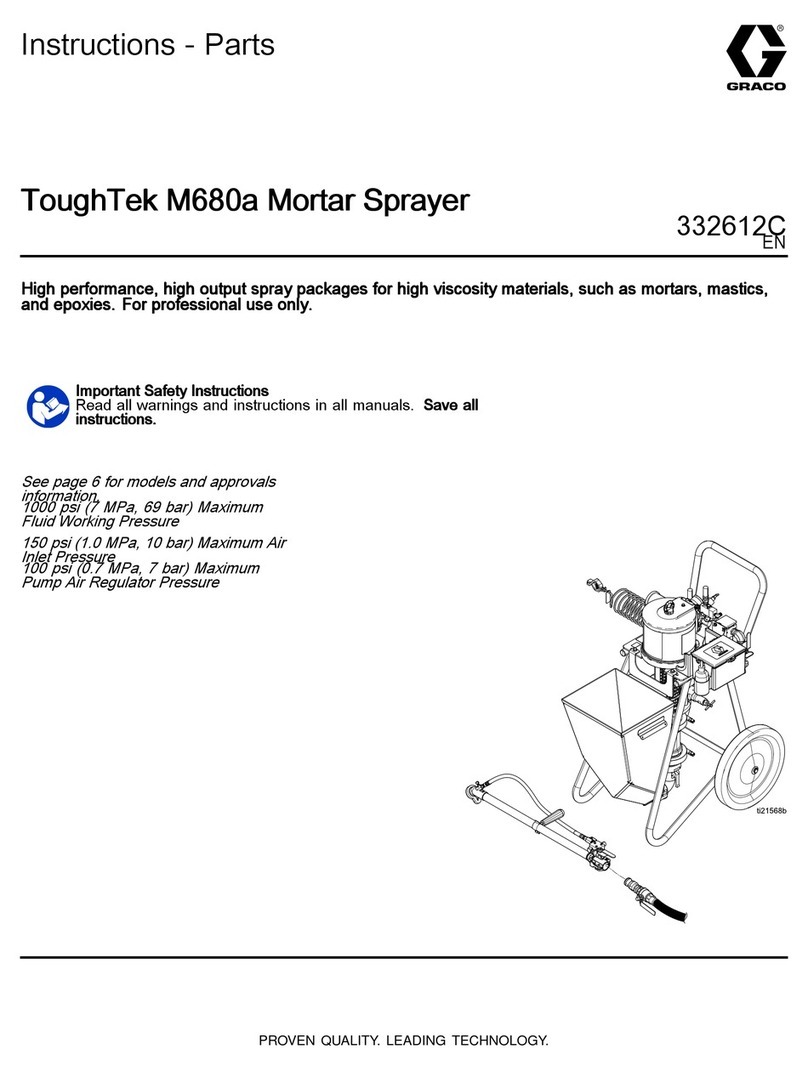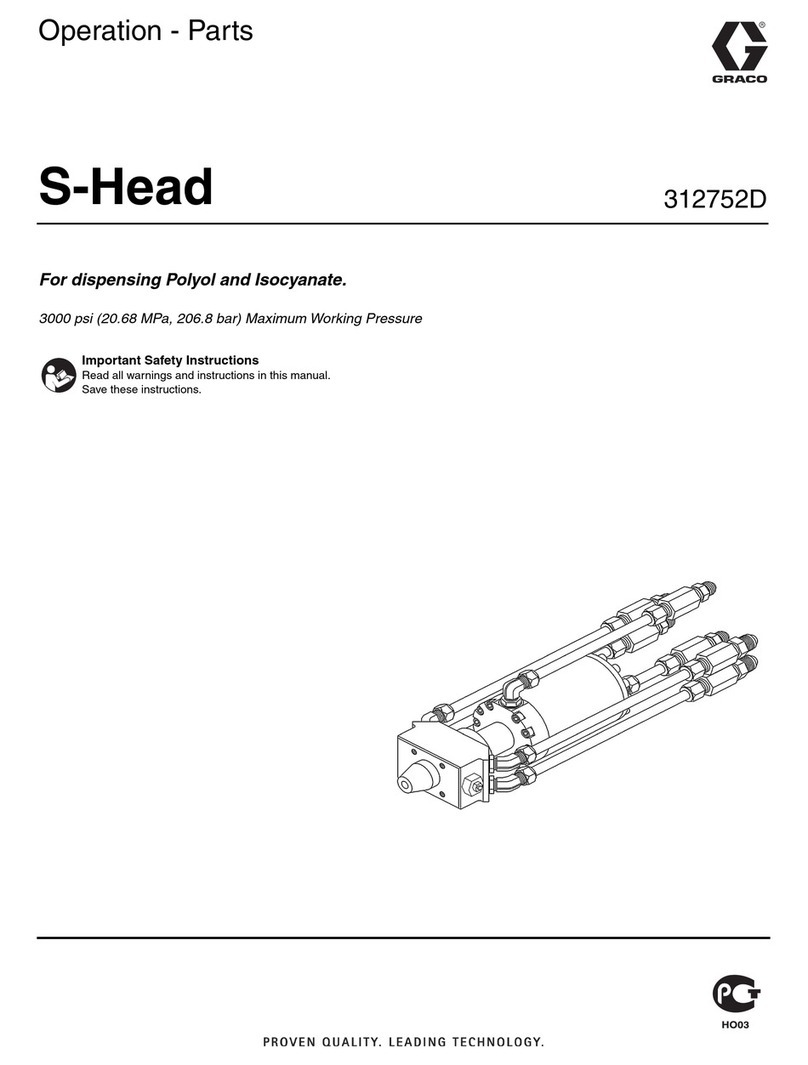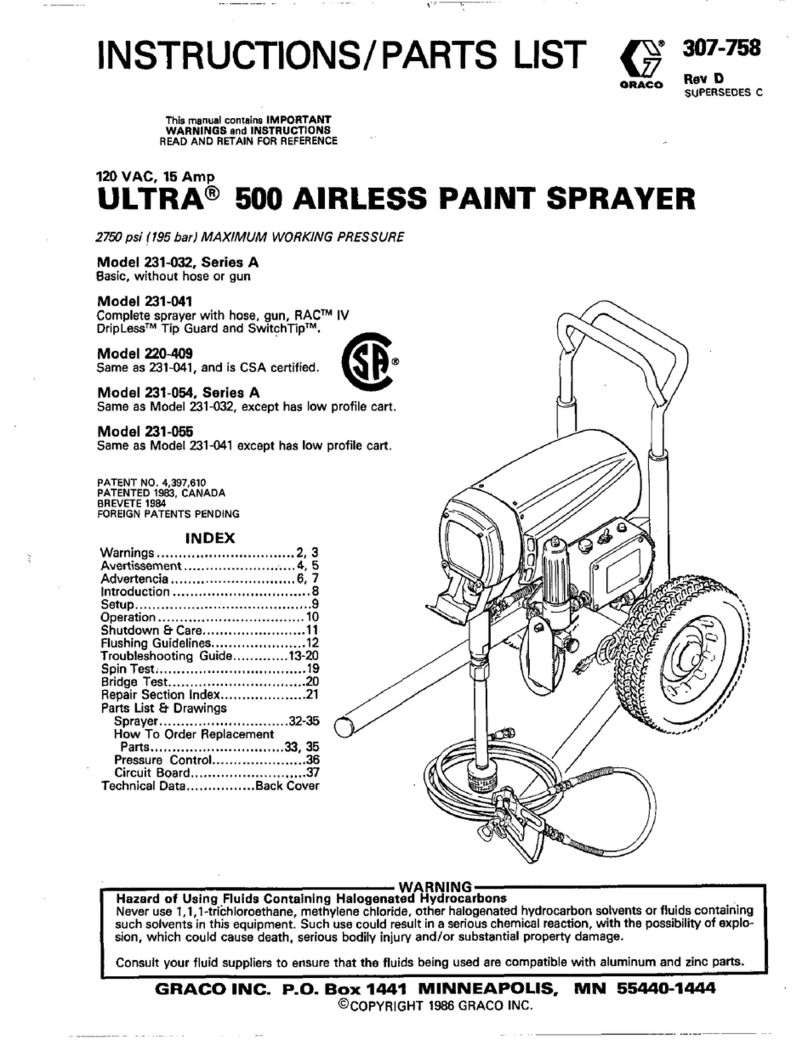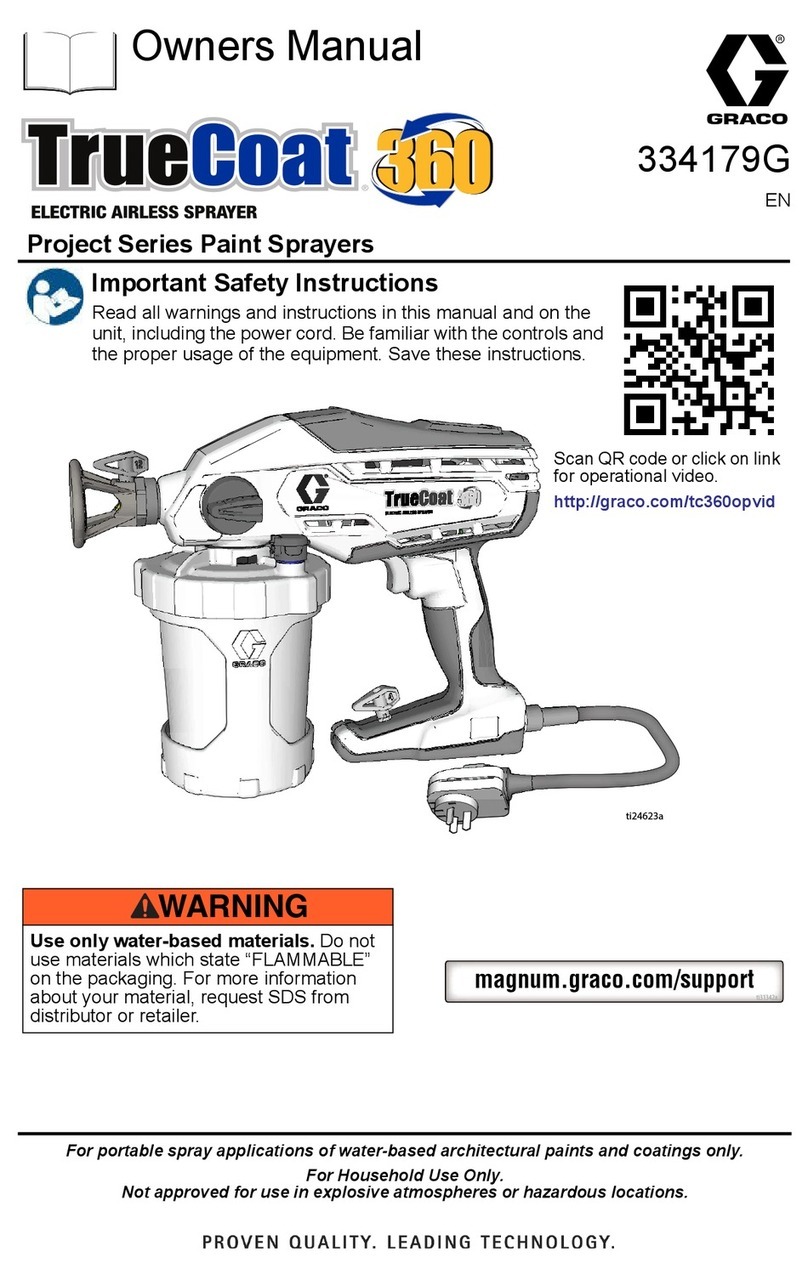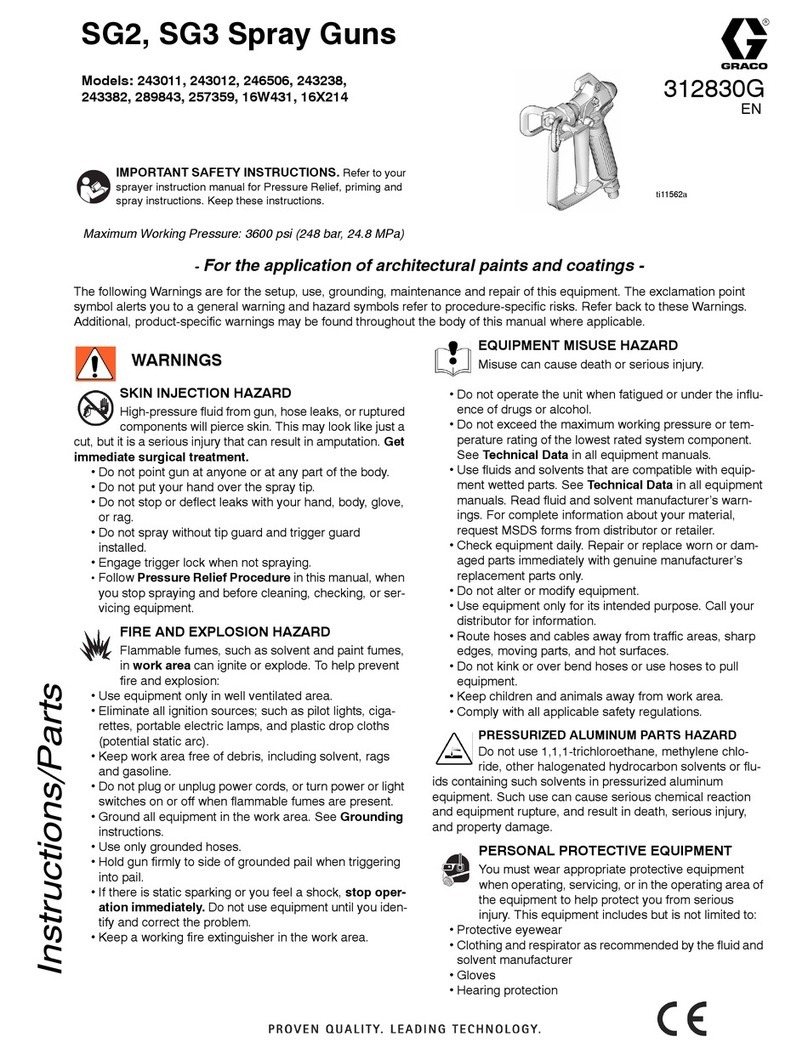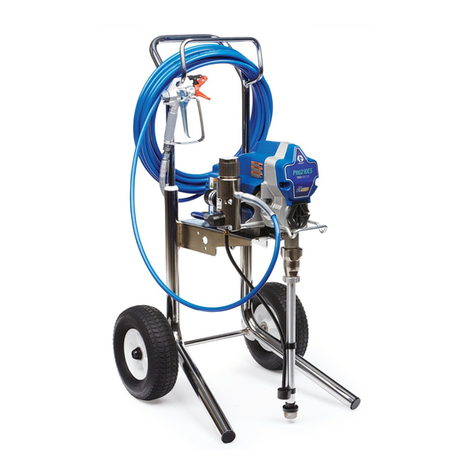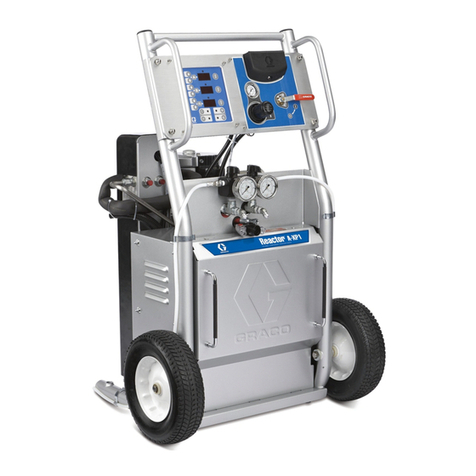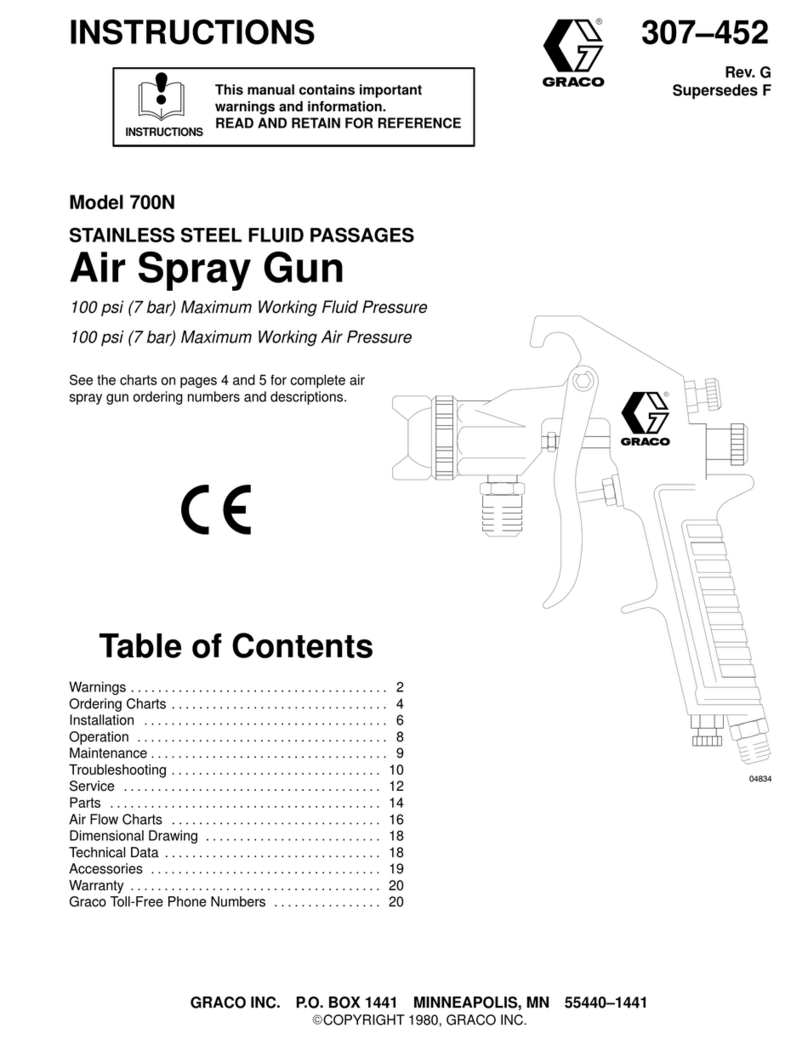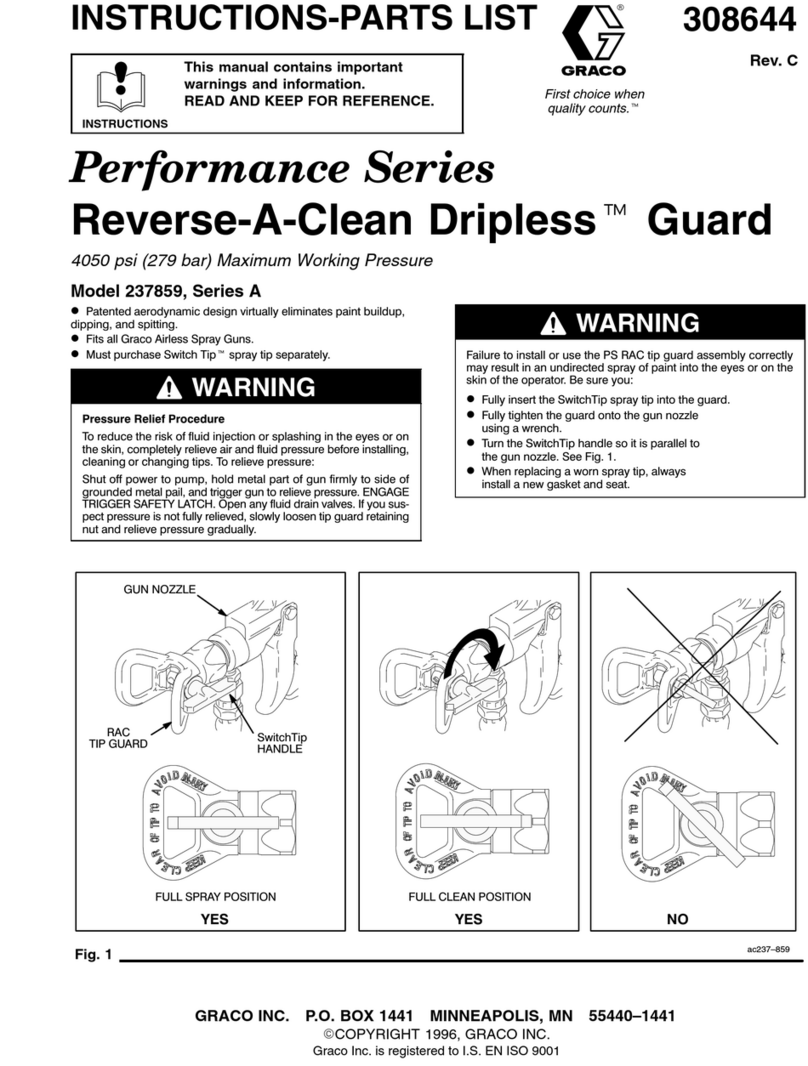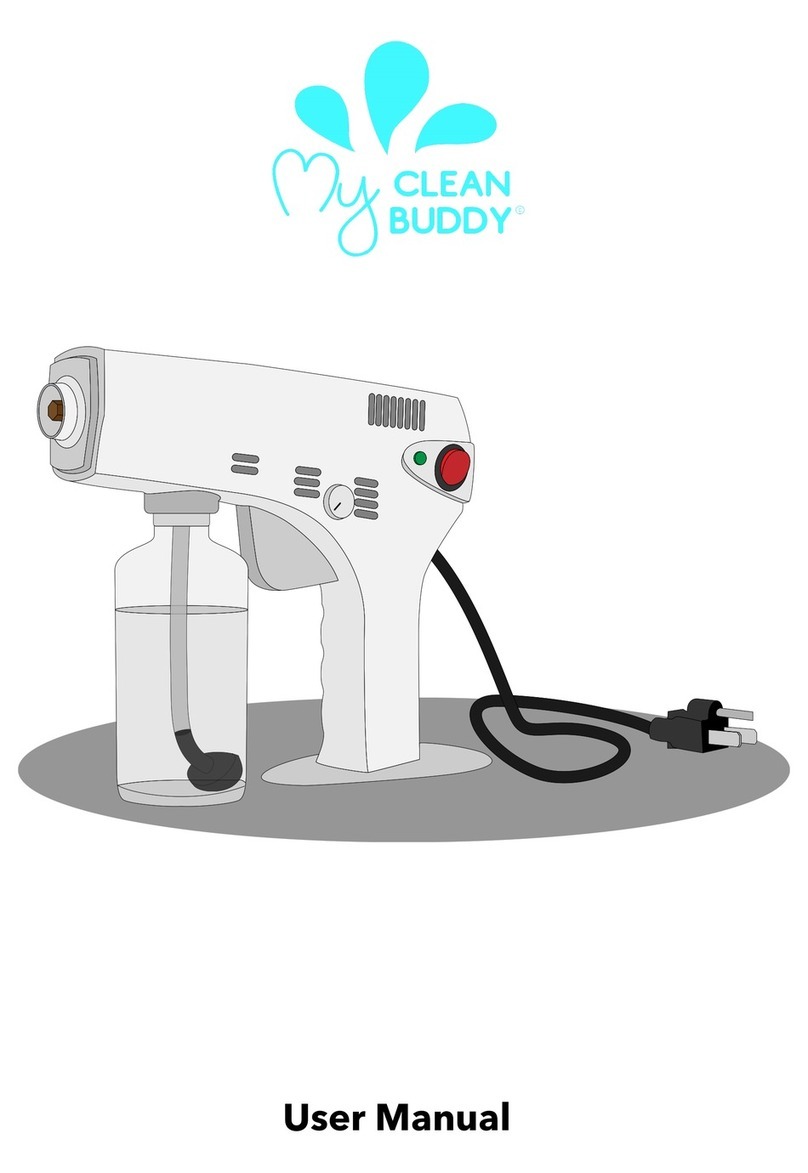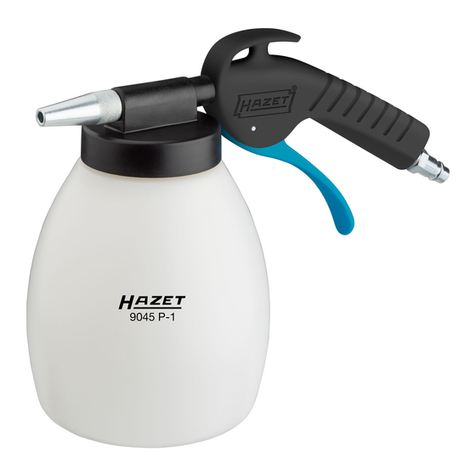
Operation
9. Install the spray tip and tip guard.
Engage the
gun safety latch. Install the spray tip. If you are
using the RAC IV tip guard, refer to manual
307–848 for installation instructions.
10.
Adjust the pressure.
a. T
urn the pressure adjusting knob clockwise
just until spray from the gun is completely at
-
omized. T
o avoid excessive overspray and fog
-
ging, and to decrease tip wear and extend the
life of the sprayer
, always use the lowest pos
-
sible pressure needed to get the desired re
-
sults.
b.
If more coverage is needed, use a larger tip
rather than increasing the pressure.
c. T
est the spray pattern. T
o adjust the direction
of the spray pattern: engage the gun safety
latch, loosen the retaining nut, position the tip
guard horizontally for a horizontal pattern or
vertically for a vertical pattern and tighten the
retaining nut.
Cleaning a Clogged Tip
To
reduce the risk of serious injury
,
whenever you are instructed to relieve
pressure, follow the
Pressure Relief
Procedure
on page 7.
WARNING
INJECTION HAZARD
1.
If the spray tip does clog, release the gun trigger
,
engage the gun safety latch, relieve pressure, and
rotate the RAC IV SwitchT
ip 180
. See Fig. 5.
2.
Disengage the gun safety latch and trigger the gun
into a waste container
. Engage the gun safety
latch again.
Fig. 5
1
2
SwitchTip
shown in
spraying position
Gun safety latch
shown engaged
0137
1
2
3. Return
the SwitchT
ip to the original position, disen
-
gage the gun safety latch, and resume spraying.
4.
If the tip is still clogged, engage the gun safety
latch, shut of
f and unplug the sprayer
, and open
the pressure drain valve to relieve pressure. Clean
the spray tip as shown in manual 307–848, sup
-
plied with the RAC IV
.
Shutdown and Care
1. Check the packing nut/wet-cup (216) daily.
Re
-
lieve the pressure. Keep the packing nut/wet-cup
1/3 full with TSL at all times to help prevent fluid
buildup on the piston rod and premature wear of
packings. Tighten the packing nut just enough to
stop leakage. Overtightening may cause binding
and excessive packing wear
. Use a screwdriver
and light hammer to adjust the nut. See Fig. 6.
2. Clean the fluid filter (48) often
and whenever the
sprayer is stored. First relieve pressure. See man
-
ual 307–273 for the cleaning procedure.
3. Fill the connecting rod cavity
(A)
with motor oil
every 100 hours of operation. Relieve pressure
first.
See Fig. 6.
Fig. 6
A
48
216
03658
4. For very short shutoff periods,
leave the suction
tube in the paint, relieve pressure, and clean the
spray tip.
5. Coil the hose and hang it on the hose rack
when storing it, even for overnight, to help protect
the hose from kinking, abrasion, coupling damage,
etc.
